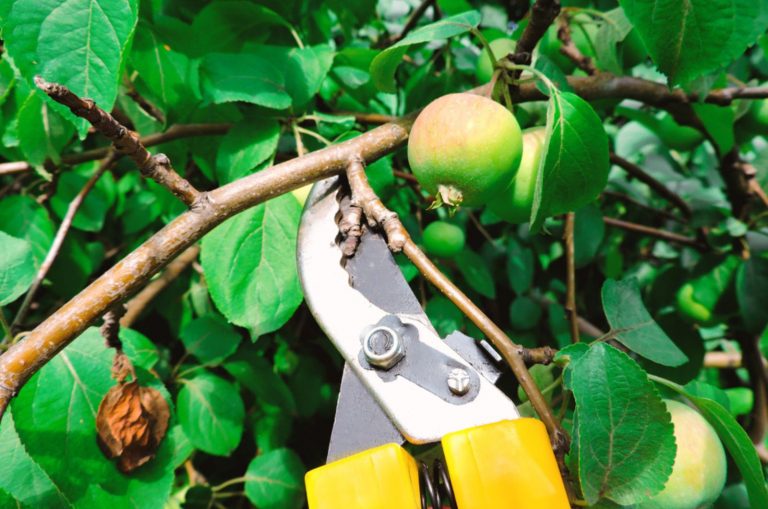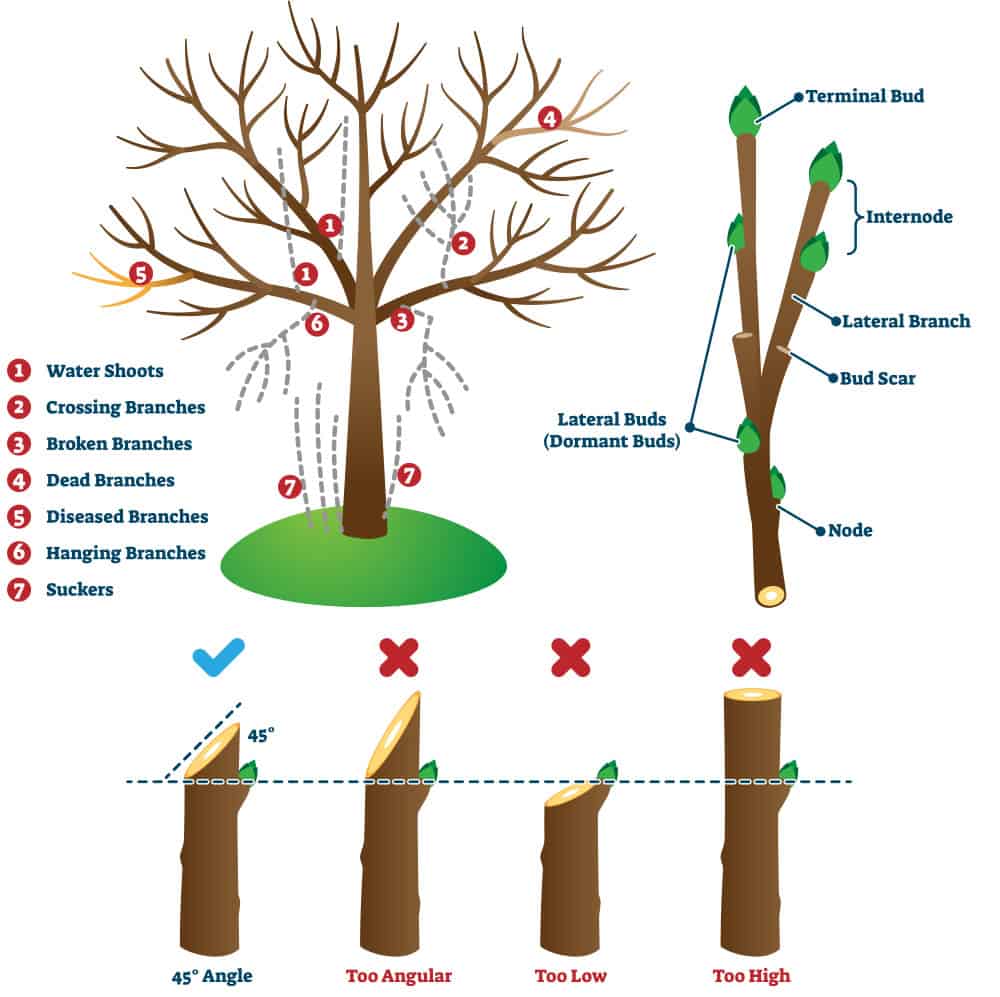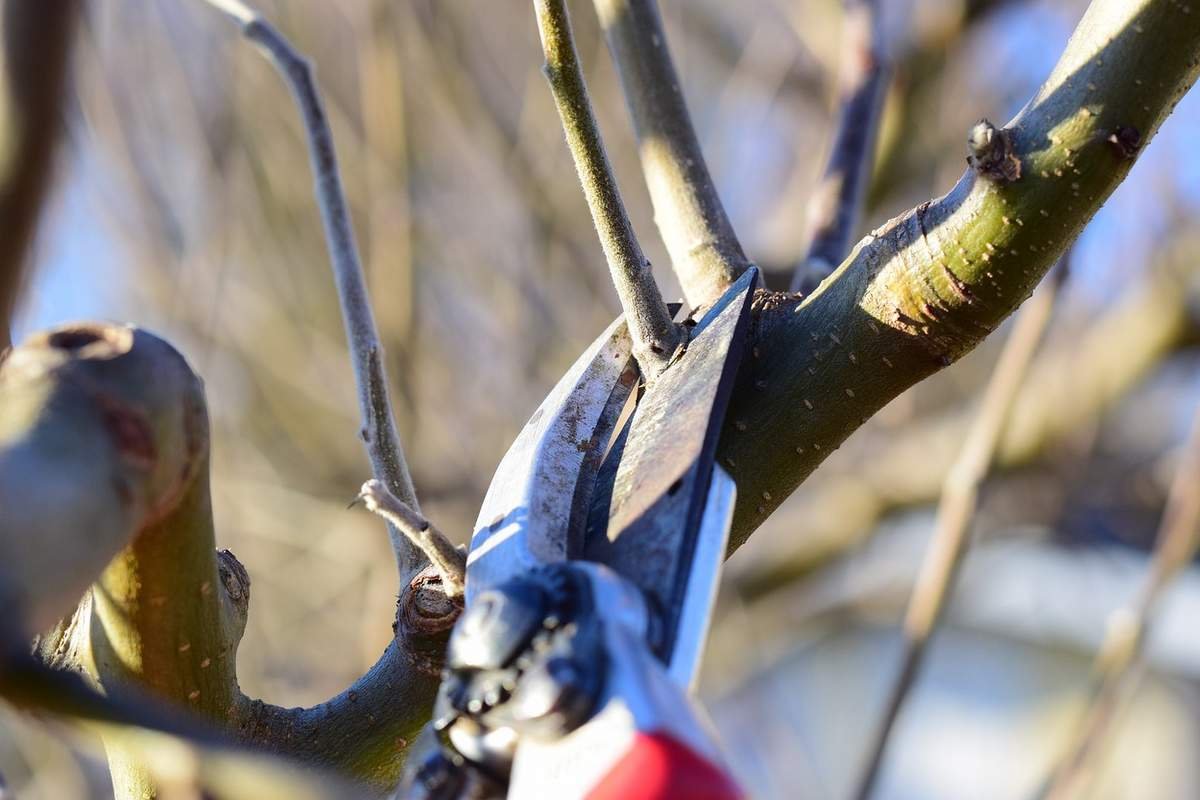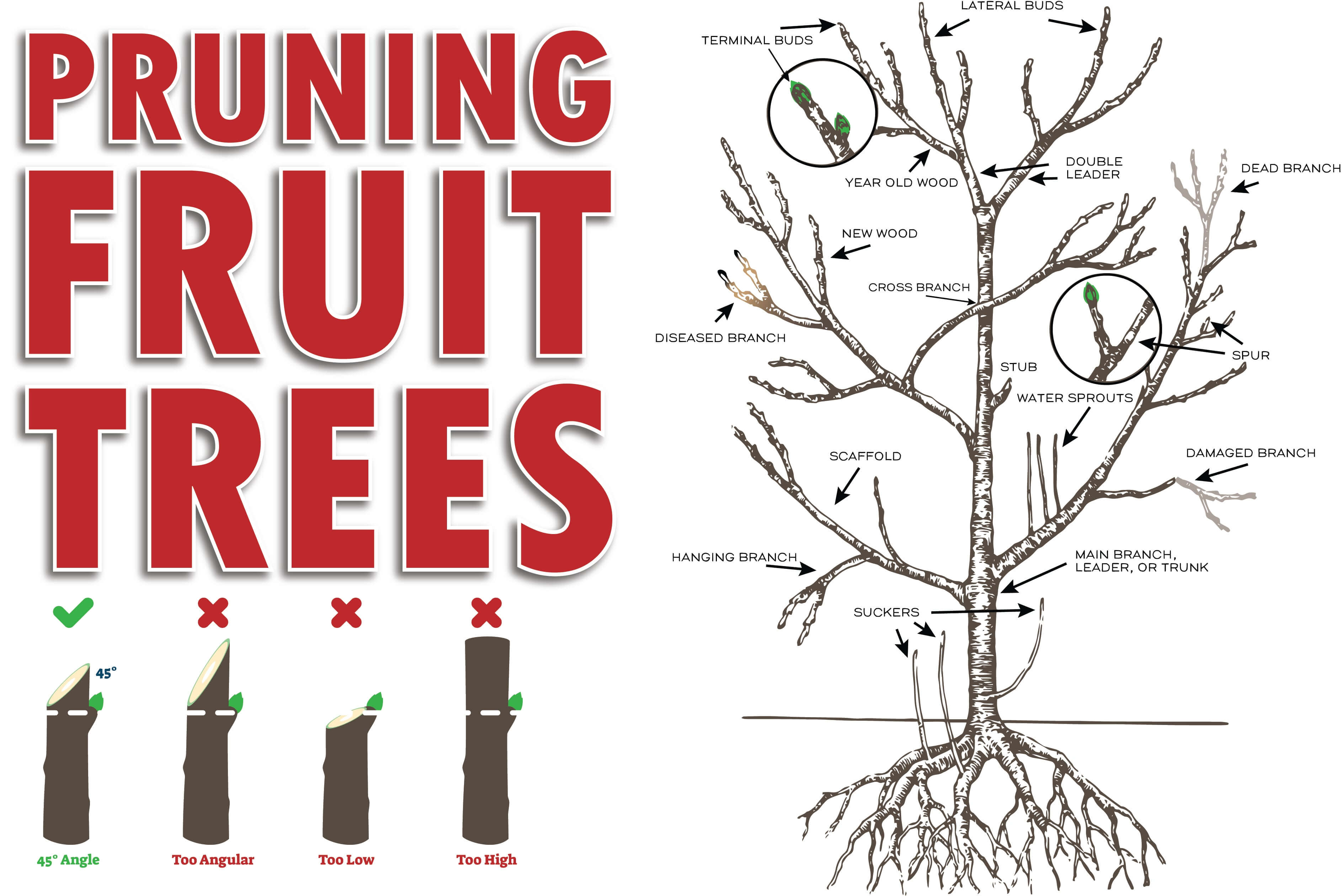Why Prune Your Apple Tree in Autumn?
Pruning apple trees in autumn is a crucial step in maintaining their health and promoting optimal growth. By pruning at this time, you can help your tree conserve energy and resources during the winter months, leading to a stronger and more productive tree in the spring. Autumn pruning also allows you to remove any diseased or damaged branches, reducing the risk of disease and pest infestations. Furthermore, pruning in autumn can help increase fruit production, as it allows you to shape the tree and promote fruiting branches.
When pruning apple trees in autumn, it’s essential to understand the benefits of this practice. Pruning helps to promote healthy growth by removing weak or damaged branches, allowing the tree to focus its energy on producing fruit and growing new branches. Additionally, pruning can help to reduce disease susceptibility by removing infected branches and promoting air circulation within the tree. By pruning your apple tree in autumn, you can help to create a strong and healthy tree that will thrive for years to come.
Autumn is also an ideal time to prune apple trees because the tree is dormant, making it easier to see the branch structure and identify which branches to prune. This allows you to make more precise cuts and avoid damaging the tree. Moreover, pruning in autumn helps to reduce the risk of disease and pest infestations, as many diseases and pests are less active during this time.
In terms of the benefits of pruning apple trees in autumn, it’s worth noting that this practice can also help to increase fruit production. By pruning the tree to promote fruiting branches and removing weak or damaged branches, you can help to increase the yield of your apple tree. This is especially important for commercial apple growers, as it can help to increase profits and improve the overall health of the tree.
Overall, pruning apple trees in autumn is a crucial step in maintaining their health and promoting optimal growth. By understanding the benefits of this practice and incorporating it into your tree care routine, you can help to create a strong and healthy tree that will thrive for years to come. Whether you’re a commercial apple grower or a homeowner with a single apple tree, pruning in autumn is an essential step in ensuring the long-term health and productivity of your tree.
Preparing for Pruning: Essential Tools and Safety Precautions
Before you start pruning your apple tree, it’s essential to have the right tools and take necessary safety precautions. Pruning can be a physically demanding task, and using the right equipment can make the process easier and safer. Here are some essential tools you’ll need to prune your apple tree:
Pruning shears: These are the most critical tool for pruning apple trees. Look for high-quality pruning shears that are sharp and comfortable to use. Pruning shears come in different types, including bypass and anvil pruners. Bypass pruners are ideal for cutting living branches, while anvil pruners are better suited for cutting dead or diseased wood.
Loppers: Loppers are long-handled pruning shears that are perfect for cutting thicker branches. They are ideal for pruning branches that are out of reach or too thick for pruning shears.
Gloves: Pruning can be a messy job, and wearing gloves can protect your hands from thorns, sap, and other debris. Look for high-quality gardening gloves that are waterproof and provide grip and protection.
Protective gear: When pruning, it’s essential to wear protective gear, including safety glasses, a hard hat, and a dust mask. This will protect you from falling branches, debris, and other hazards.
Stable ladder: If you need to prune branches that are out of reach, make sure you have a stable ladder. Look for a ladder that is sturdy, tall enough, and has non-slip feet. Always maintain three points of contact with the ladder, whether it’s two hands and one foot or two feet and one hand.
First aid kit: Accidents can happen when pruning, so it’s essential to have a first aid kit nearby. Make sure the kit includes supplies for treating cuts, scrapes, and other minor injuries.
By having the right tools and taking necessary safety precautions, you can ensure a safe and successful pruning experience. Remember to always prune your apple tree in autumn, as this is the best time to promote healthy growth and fruit production.
Understanding Apple Tree Anatomy: Identifying Branches to Prune
Before you start pruning your apple tree, it’s essential to understand the different types of branches that make up the tree’s structure. Apple trees have a unique anatomy that consists of several types of branches, each with its own specific function. By understanding the different types of branches, you can identify which ones to prune for optimal tree health.
Leader branches: These are the main branches that grow from the trunk of the tree. Leader branches provide the framework for the tree’s structure and support the weight of the fruit. When pruning, it’s essential to maintain a strong leader branch to ensure the tree’s stability.
Scaffold branches: These are the secondary branches that grow from the leader branches. Scaffold branches provide additional support for the fruit and help to distribute the weight evenly throughout the tree. When pruning, look for scaffold branches that are growing in a way that promotes good air circulation and sunlight penetration.
Water sprouts: These are vigorous, upright branches that grow from the trunk or branches of the tree. Water sprouts can be a sign of stress or disease and should be removed when pruning. By removing water sprouts, you can help to promote healthy growth and prevent disease.
Fruiting branches: These are the branches that produce fruit. Fruiting branches are typically smaller and more delicate than leader or scaffold branches. When pruning, look for fruiting branches that are producing fruit and remove any weak or diseased branches to promote healthy fruit production.
By understanding the different types of branches that make up your apple tree’s structure, you can identify which branches to prune for optimal tree health. Remember to prune your apple tree in autumn, as this is the best time to promote healthy growth and fruit production.
When identifying branches to prune, look for the following characteristics:
Dead or diseased branches: These should be removed immediately to prevent the spread of disease.
Weak or damaged branches: These should be removed to promote healthy growth and prevent damage to the tree.
Crossing branches: These should be removed to promote good air circulation and sunlight penetration.
By removing these types of branches, you can help to promote healthy growth and fruit production in your apple tree.
Pruning Techniques for Apple Trees: Cutting and Thinning
Pruning is an essential part of maintaining the health and productivity of apple trees. When done correctly, pruning can help to promote healthy growth, increase fruit production, and reduce disease susceptibility. In this section, we will discuss the techniques for pruning apple trees, including cutting and thinning.
Cutting Techniques:
When pruning apple trees, it’s essential to make clean cuts that do not damage the tree. Here are some tips for making clean cuts:
Use sharp pruning tools: Dull pruning tools can tear the bark and damage the tree. Make sure to use sharp pruning shears or loppers to make clean cuts.
Cut at a 45-degree angle: Cutting at a 45-degree angle helps to prevent water from collecting on the cut surface, which can lead to disease.
Cut just above a bud: Cutting just above a bud helps to promote new growth and prevents the tree from becoming leggy.
Thinning Techniques:
Thinning is the process of removing select branches to allow more sunlight to reach the fruiting branches. Here are some tips for thinning apple trees:
Remove crossing branches: Crossing branches can rub against each other and cause damage to the tree. Remove any crossing branches to promote healthy growth.
Remove weak or diseased branches: Weak or diseased branches can reduce the overall health of the tree. Remove any weak or diseased branches to promote healthy growth.
Remove water sprouts: Water sprouts are vigorous, upright branches that can grow from the trunk or branches of the tree. Remove any water sprouts to promote healthy growth.
By following these cutting and thinning techniques, you can help to promote healthy growth and increase fruit production in your apple tree. Remember to prune your apple tree in autumn, as this is the best time to promote healthy growth and fruit production.
Here’s a step-by-step guide to pruning apple trees:
Step 1: Remove any dead or diseased branches.
Step 2: Remove any crossing branches.
Step 3: Remove any weak or diseased branches.
Step 4: Remove any water sprouts.
Step 5: Thin out the branches to allow more sunlight to reach the fruiting branches.
By following these steps, you can help to promote healthy growth and increase fruit production in your apple tree.
Pruning for Fruit Production: Tips for Maximizing Yield
Pruning apple trees is not only essential for maintaining their health and structure, but also for promoting fruit production. By pruning your apple tree correctly, you can increase the yield and quality of your fruit. Here are some tips for pruning apple trees for optimal fruit production:
Prune for fruiting branches: Fruiting branches are the branches that produce fruit. When pruning, look for branches that are producing fruit and prune them to promote more fruiting. Remove any weak or diseased branches that are not producing fruit.
Remove weak fruiting wood: Weak fruiting wood is wood that is not producing fruit or is producing fruit that is not of good quality. Remove any weak fruiting wood to promote healthy fruit production.
Promote air circulation: Good air circulation is essential for healthy fruit production. Prune your apple tree to promote air circulation by removing any branches that are rubbing against each other or are growing inwards.
Thin out the fruit: Thinning out the fruit is essential for promoting healthy fruit production. Remove any fruit that is not of good quality or is growing too close together.
Prune for sunlight penetration: Sunlight penetration is essential for healthy fruit production. Prune your apple tree to allow more sunlight to reach the fruiting branches.
By following these tips, you can help to promote healthy fruit production in your apple tree. Remember to prune your apple tree in autumn, as this is the best time to promote healthy growth and fruit production.
Here are some additional tips for pruning apple trees for optimal fruit production:
Prune your apple tree annually: Annual pruning is essential for maintaining the health and structure of your apple tree. Prune your apple tree every autumn to promote healthy growth and fruit production.
Use the right pruning tools: Using the right pruning tools is essential for making clean cuts and promoting healthy growth. Use sharp pruning shears or loppers to prune your apple tree.
Make clean cuts: Making clean cuts is essential for promoting healthy growth and preventing disease. Make clean cuts just above a bud or a lateral branch.
By following these tips, you can help to promote healthy fruit production in your apple tree and enjoy a bountiful harvest.
Common Mistakes to Avoid When Pruning Apple Trees
Pruning apple trees can be a complex process, and making mistakes can have negative consequences for the tree’s health and productivity. Here are some common mistakes to avoid when pruning apple trees:
Over-pruning: Over-pruning can stress the tree and lead to disease or pest problems. Remove no more than 25% of the tree’s branches in a single year.
Under-pruning: Under-pruning can lead to a lack of fruit production and a decrease in the tree’s overall health. Make sure to prune enough to promote healthy growth and fruit production.
Pruning at the wrong time of year: Pruning apple trees at the wrong time of year can cause stress to the tree and lead to disease or pest problems. Prune apple trees in autumn, after the harvest, to promote healthy growth and fruit production.
Not making clean cuts: Not making clean cuts can lead to disease or pest problems. Make clean cuts just above a bud or a lateral branch, and use sharp pruning tools to prevent tearing the bark.
Not removing weak or diseased branches: Not removing weak or diseased branches can lead to a decrease in the tree’s overall health and productivity. Remove any weak or diseased branches to promote healthy growth and fruit production.
Pruning too much of the tree’s canopy: Pruning too much of the tree’s canopy can lead to a lack of fruit production and a decrease in the tree’s overall health. Prune only what is necessary to promote healthy growth and fruit production.
Not considering the tree’s age and size: Not considering the tree’s age and size can lead to over-pruning or under-pruning. Prune younger trees more lightly, and prune older trees more heavily.
By avoiding these common mistakes, you can help to promote healthy growth and fruit production in your apple tree. Remember to prune your apple tree in autumn, after the harvest, to promote healthy growth and fruit production.
Here are some additional tips for avoiding common mistakes when pruning apple trees:
Consult with a professional: If you are unsure about how to prune your apple tree, consult with a professional arborist or orchardist.
Use the right pruning tools: Use sharp pruning tools to prevent tearing the bark and to make clean cuts.
Make a plan: Before you start pruning, make a plan to ensure that you prune only what is necessary to promote healthy growth and fruit production.
By following these tips, you can help to promote healthy growth and fruit production in your apple tree and avoid common mistakes when pruning.
Post-Pruning Care: How to Help Your Apple Tree Recover
After pruning your apple tree, it’s essential to provide proper care to help it recover and promote healthy growth. Here are some tips for post-pruning care:
Watering: Water your apple tree regularly, especially during the first year after pruning. This will help the tree to establish a strong root system and promote healthy growth.
Fertilizing: Fertilize your apple tree annually, using a balanced fertilizer that contains nitrogen, phosphorus, and potassium. This will help to promote healthy growth and fruit production.
Monitoring for pests and diseases: Regularly monitor your apple tree for signs of pests and diseases, such as aphids, codling moths, and powdery mildew. Use organic or integrated pest management methods to control any infestations or infections.
Pruning wound care: After pruning, apply a pruning wound dressing to the cut surfaces to help prevent disease and promote healing.
Mulching: Mulch around the base of your apple tree to retain moisture, suppress weeds, and regulate soil temperature.
Support: Provide support for your apple tree, such as staking or trellising, to help it grow upright and promote healthy growth.
By following these tips, you can help your apple tree to recover from pruning and promote healthy growth and fruit production.
Here are some additional tips for post-pruning care:
Keep the area around your apple tree weed-free to prevent competition for water and nutrients.
Use a soil test to determine the nutrient levels in your soil and adjust your fertilization program accordingly.
Consider using a drip irrigation system to deliver water directly to the roots of your apple tree, reducing evaporation and runoff.
By providing proper care and attention, you can help your apple tree to thrive and produce delicious fruit for years to come.
Conclusion: The Importance of Regular Pruning for Apple Tree Health
Regular pruning is essential for maintaining the health and productivity of apple trees. By pruning your apple tree in autumn, you can promote healthy growth, increase fruit production, and reduce disease susceptibility. Remember to prune your apple tree annually, using the techniques and tips outlined in this article.
Pruning is a critical part of apple tree care, and neglecting to prune can lead to a range of problems, including reduced fruit production, increased disease susceptibility, and decreased tree longevity. By incorporating regular pruning into your tree care routine, you can help to ensure the long-term health and productivity of your apple tree.
In addition to promoting healthy growth and fruit production, regular pruning can also help to improve the overall appearance of your apple tree. By removing dead, diseased, or damaged branches, you can help to maintain a neat and tidy tree that is a pleasure to behold.
By following the tips and techniques outlined in this article, you can help to ensure the long-term health and productivity of your apple tree. Remember to prune your apple tree in autumn, using the techniques and tips outlined in this article, and enjoy a bountiful harvest of delicious apples for years to come.
Regular pruning is a simple and effective way to promote healthy growth and fruit production in apple trees. By incorporating regular pruning into your tree care routine, you can help to ensure the long-term health and productivity of your apple tree, and enjoy a bountiful harvest of delicious apples for years to come.








